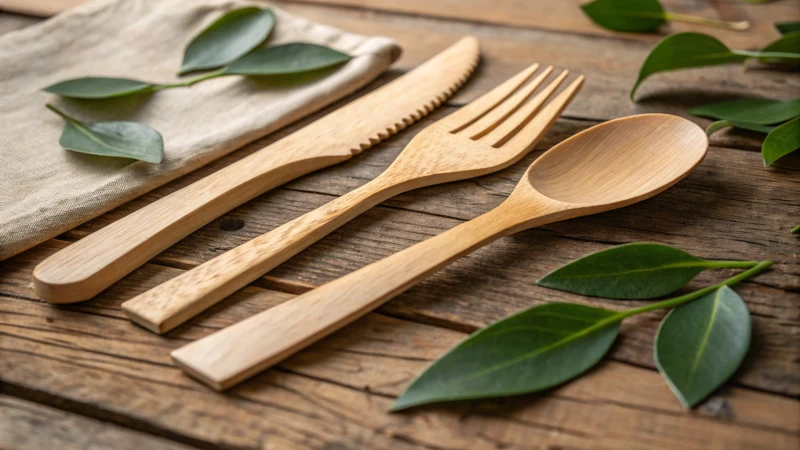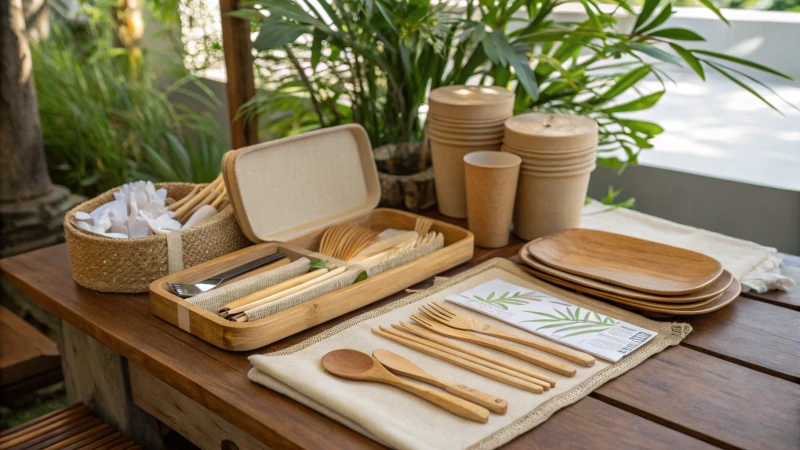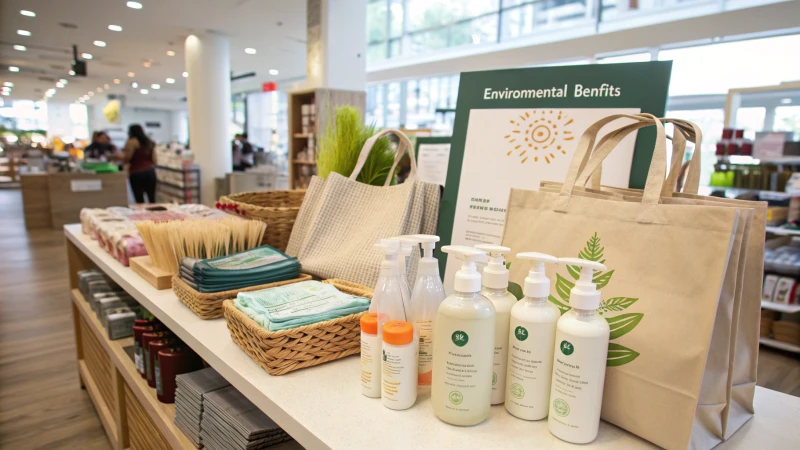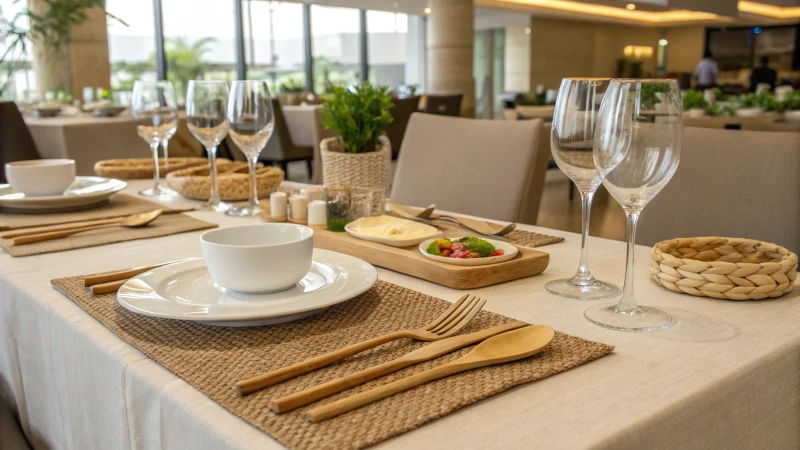
Remember the last time you reached for a plastic fork and wondered if there was a better way?
Consumers are curious about eco-friendly options like wooden cutlery, but their willingness to pay more hinges on perceived value, quality, and environmental benefits.
As I sat in a trendy café one afternoon, I noticed the shiny wooden forks and spoons on the table. It got me thinking—are people genuinely ready to pay more for these eco-friendly alternatives, or is it just a passing trend? From my own experiences and conversations, it seems initial interest is high. However, when digging deeper into what drives this curiosity, factors like quality and the genuine impact on the environment play a crucial role. Let's explore how these elements shape consumer choices and the real motivations behind their purchases.
Consumers prioritize cost over sustainability in cutlery choices.True
Price sensitivity often outweighs eco-friendliness in purchasing decisions.
Eco-friendly cutlery is perceived as lower quality by consumers.False
Many consumers associate eco-friendly products with high quality and value.
Why Do Consumers Prefer Sustainable Cutlery?
Ever wondered what makes people choose eco-friendly cutlery over traditional options? Let's dive into the mix of values, awareness, and trends that shape these decisions.
Consumer preference for sustainable cutlery is fueled by a growing environmental consciousness, ethical values, and a taste for quality. As more people become eco-aware, they lean towards cutlery that mirrors their principles, often choosing to pay more for its benefits.

Environmental Awareness and Ethical Considerations
I remember when I first started noticing just how much plastic waste I was contributing to each time I used disposable cutlery. It was a bit of an eye-opener for me. Many consumers are becoming increasingly conscious of the impact of plastic waste on the planet, driving the demand for biodegradable options that lessen our carbon footprints. This awareness translates into a preference for biodegradable or compostable options, as these align with the desire to reduce one's carbon footprint.
Moreover, ethical considerations play a significant role. Consumers today are more informed about the environmental impact1 of their purchases. They tend to support brands that demonstrate a commitment to eco-friendly practices, as this aligns with their values and ethical beliefs. It feels good to know that my purchases align with my values and help reduce environmental harm.
Quality Perception and Aesthetic Appeal
There's something inherently satisfying about using products that feel both luxurious and eco-friendly. Sustainable cutlery, especially those made from natural materials like wood, not only look good but often feel better to use due to their natural look and feel2. They exude quality through their natural textures and designs.
Consumers often associate natural materials with higher quality, which can influence their decision to purchase eco-friendly products. Additionally, aesthetically pleasing designs that can be customized for branding purposes further enhance consumer attraction towards sustainable cutlery options.
| Factor | Influence on Consumer Preference |
|---|---|
| Environmental Awareness | Drives demand for biodegradable options |
| Ethical Considerations | Supports brands with eco-friendly practices |
| Quality Perception | Associates natural materials with superior quality |
| Aesthetic Appeal | Encourages customization for branding |
Demographic Influences and Market Trends
In my circle of friends, it's usually the younger folks who are most vocal about sustainability. Millennials and Gen Z seem to lead the charge towards eco-friendly products, prioritizing sustainability and being willing to spend a bit more if it means supporting a good cause.
Market trends also reflect this shift. There has been an increase in the availability of eco-friendly cutlery in mainstream retail outlets and e-commerce platforms. This availability not only meets demand but also raises awareness among consumers who might not have considered these options previously.
The surge in sustainable cutlery's popularity mirrors broader sustainability trends3 across various industries, from food services to luxury hospitality. As more businesses embrace eco-friendly practices, consumer preference for such products only continues to grow.
Consumers prefer biodegradable cutlery over plastic.True
Environmental awareness leads consumers to choose biodegradable options to reduce plastic waste.
Millennials are less interested in sustainable cutlery.False
Millennials prioritize sustainability and drive demand for eco-friendly products.
How Do Businesses Justify the Higher Costs of Eco-Friendly Products?
Have you ever wondered why some eco-friendly products cost more? Let's dive into how businesses justify this and why it might be worth it.
Businesses justify the higher costs of eco-friendly products by focusing on long-term savings, significant environmental benefits, and positive impacts on brand image. They emphasize product quality, sustainability, and meeting the growing consumer demand for responsible products.

Value Proposition of Eco-Friendly Products
So, there I was, staring at a price tag that was a bit higher than I'd expected for a set of biodegradable utensils. It got me thinking about how businesses make sense of these prices. Turns out, it's all about showcasing the real value behind those eco-friendly labels. Businesses often highlight how durable and high-quality these products are, which can lead to long-term savings4. For instance, paying a bit more for biodegradable cutlery can actually lower waste management costs in the long run.
| Feature | Eco-Friendly Products | Conventional Products |
|---|---|---|
| Durability | High | Moderate |
| Waste Reduction | Yes | No |
| Recyclability | Often | Rarely |
Aligning with Consumer Values
It wasn't until a friend of mine decided to pay a premium for sustainably sourced coffee that I realized how much people are willing to spend on products that reflect their values. Businesses bank on this willingness. They know that many of us are prepared to pay extra if it means supporting environmental and social causes we care about. And the numbers back it up—eco-conscious consumers tend to stick with brands that match their values.
Communicating the Environmental Impact
I've always been skeptical about product labels until I saw the impact they had on my own shopping habits. That's exactly what businesses aim for when they use labels and certifications to show off the eco-friendliness of their products. Take FSC certification on wooden cutlery, for example—it reassures buyers about sustainable sourcing, which helps justify those higher prices. Curious? Check out more on sustainable sourcing practices5.
Enhancing Brand Image and Loyalty
Remember the first time you felt proud to support a brand because of its values? That’s the effect businesses aim to create by investing in eco-friendly products. It’s not just about attracting more customers; it's also about building a loyal community that stands by their values. When companies integrate eco-friendly options, they leverage this enhanced brand image in marketing campaigns, deepening customer loyalty.
Challenges and Opportunities in Pricing Strategy
Now, pricing these eco-friendly goodies isn't a walk in the park. But businesses are getting creative with strategies like bundling or loyalty programs to manage how customers perceive costs. By analyzing how we behave as consumers and tracking market trends, companies can tweak their pricing strategies6 to stay competitive while holding onto their ethical standards.
Eco-friendly products are always more durable than conventional ones.True
Eco-friendly products often emphasize durability, leading to long-term savings.
All consumers are willing to pay more for eco-friendly products.False
Not all consumers prioritize eco-friendliness; some focus on cost over values.
How Does Packaging Influence Perceived Value?
Ever found yourself reaching for a product because its packaging just spoke to you?
Packaging plays a crucial role in shaping perceived value by communicating quality, sustainability, and brand identity, enhancing the consumer experience, and often justifying higher prices through its design and eco-friendly attributes.

Packaging as a Reflection of Quality
There was a time when I bought this beautifully packaged chocolate bar. The wrapper had these metallic accents and a textured finish that screamed luxury before I even tasted it. That's the magic of a well-designed package—it signals quality instantly. Similarly, sustainable packaging options7 made from recycled materials resonate deeply with eco-conscious buyers like myself.
| Aspect | Perceived Value |
|---|---|
| Material Quality | Suggests durability and luxury |
| Design Complexity | Reflects attention to detail |
| Functionality | Enhances user experience |
Eco-Friendly Packaging and Consumer Perceptions
I remember switching brands simply because one offered eco-friendly packaging. With increasing environmental awareness, many consumers, including myself, associate such packaging with higher value. In fact, studies show that buyers are willing to pay more for products with sustainable packaging, which not only meets regulatory demands but also aligns with our values.
The Psychology Behind Packaging Design
The colors and shapes on a package can evoke emotions and memories. Once, a minimalist design caught my eye because it conveyed sophistication, while vibrant colors usually attract me when I'm in the mood for something fun and energetic.
A minimalist design8 can convey sophistication, while vibrant colors might attract a younger audience seeking fun and energy.
Brand Identity and Packaging
Think of packaging as a tangible expression of brand identity. Consistent use of colors and logos across packaging enhances brand recognition and loyalty. For brands like WonBon, emphasizing sustainability, packaging reinforces their commitment to eco-friendly practices.
Customization and Its Impact
When I receive products in personalized packaging, I feel a special connection. Offering customizable packaging allows businesses to connect with their audience on a personal level, especially effective in luxury goods or events where personalization can significantly elevate perceived value.
| Feature | Benefit |
|---|---|
| Personalization | Creates emotional connection |
| Limited Editions | Enhances exclusivity perception |
| Interactive Elements | Engages consumers |
Luxurious packaging materials suggest premium products.True
Materials like metallic accents imply higher quality and luxury.
Eco-friendly packaging decreases perceived product value.False
Eco-friendly options often increase perceived value due to sustainability.
How Are Different Industries Adopting Eco-Friendly Cutlery?
Embracing eco-friendly cutlery is transforming the way businesses operate, intertwining sustainability with everyday dining experiences.
Industries are adopting eco-friendly cutlery by choosing biodegradable materials, aligning products with environmental standards, and customizing designs to fit brand identities. This shift caters to sustainability goals and the rising consumer demand for greener choices.

Hospitality Industry
When I first stepped into the role of procurement officer for a luxury hotel, the emphasis on sustainability was like a breath of fresh air. It's fascinating how the hospitality industry, especially in places like the UAE, is at the forefront of adopting eco-friendly cutlery. I remember Ahmed, a colleague of mine, who always emphasized how integrating sustainability and luxury9 was not just about compliance but also about offering our guests an unparalleled experience. By opting for visually appealing, biodegradable options, we align with broader green initiatives.
| Key Focus Areas | Description |
|---|---|
| Quality | High-end materials ensure luxury experience. |
| Customization | Tailored designs to match brand identity. |
| Compliance | Meets stringent safety and sustainability standards. |
Food & Beverage Sector
In the bustling world of restaurants and fast-food chains, it's all about staying ahead of the curve. I once collaborated with Sarah from Australia, whose passion for sustainable sourcing was infectious. She had this knack for selecting products that not only met her brand's alignment10 but also appealed to environmentally conscious diners.
- Quality: Focused on durability and sustainability.
- Design: Must fit the brand's image and customer expectations.
- Cost: Balancing price with quality to remain competitive.
Healthcare and Medical Supplies
My friend Dr. Lucas, a supply chain manager in Germany, often shares his insights on how the healthcare sector is making strides in sustainability. Compliance is crucial here, and he ensures that the biodegradable products11 sourced do not compromise on patient safety while reducing our environmental footprint.
- Safety: Compliance with health regulations.
- Reliability: Consistent quality and supply.
- Sustainability: Reducing waste with biodegradable materials.
E-commerce Retail
I’ve seen how e-commerce platforms are harnessing the eco-friendly wave. Lisa in Canada comes to mind; she's always on top of market trends, curating products that captivate environmentally-conscious shoppers. Her focus on visually appealing packaging12 is a brilliant strategy to stand out in the crowded online space.
- Trends: Keeping up with sustainable product trends.
- Packaging: Aesthetic appeal to attract online consumers.
- Pricing: Competitive pricing to drive sales.
Government and Public Sector
In my discussions with Michael from the UK, it’s clear how the public sector is pushing boundaries by integrating eco-friendly cutlery into government projects. His commitment to demanding strict environmental certifications13 ensures that public use products meet high standards while fostering long-term partnerships.
- Certifications: Must meet rigorous environmental standards.
- Partnerships: Long-term supplier relationships for reliability.
- Public Use: Ensuring products are suitable for various public settings.
Each of these industries showcases a concerted effort to adopt eco-friendly cutlery through strategic sourcing, compliance, and customization driven by sustainability goals and consumer expectations for greener alternatives. Embracing these changes is more than just a trend—it's a step towards a sustainable future we can all be proud of.
Luxury hotels prioritize eco-friendly cutlery.True
Luxury hotels focus on sustainability, enhancing guest experiences with biodegradable cutlery.
E-commerce platforms ignore eco-friendly trends.False
E-commerce platforms actively offer eco-friendly products to attract conscious buyers.
Conclusion
Consumers show interest in eco-friendly wooden cutlery, with willingness to pay more influenced by perceived quality, environmental benefits, and ethical considerations amidst growing sustainability trends.
-
Discover how ethical considerations influence consumer choices in sustainable products. ↩
-
Understand the benefits of using wooden cutlery compared to traditional plastic options. ↩
-
Learn about how sustainability is shaping trends within hospitality and influencing product choices. ↩
-
Explore how choosing eco-friendly options can lead to cost savings over time by reducing waste and energy consumption. ↩
-
Discover the importance of sustainable sourcing in ensuring product quality and environmental responsibility. ↩
-
Understand how businesses can price eco-friendly products to balance competitiveness with ethical commitments. ↩
-
Explore how sustainable packaging enhances brand perception and attracts eco-conscious consumers. ↩
-
Understand how minimalist designs influence consumer perceptions and add to the product's perceived value. ↩
-
Explore how luxury hotels integrate sustainability into their guest experiences, focusing on eco-friendly materials. ↩
-
Understand how brands align their products with sustainability values to appeal to eco-conscious consumers. ↩
-
Discover how biodegradable materials meet stringent medical safety standards in healthcare. ↩
-
Learn about the importance of visually appealing packaging in promoting eco-friendly products online. ↩
-
Find out about the certifications required for eco-friendly products in public sector procurement. ↩

